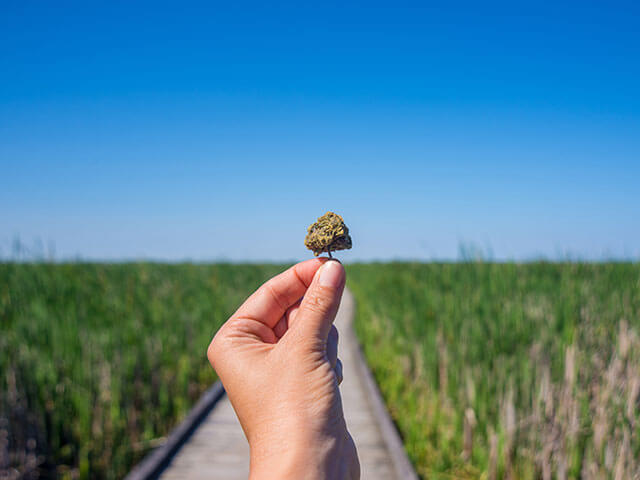As the cannabis industry continues to dominate markets across California, regulators are stepping up efforts to oversee nearly every aspect of the production and sale of marijuana. These updated regulations are beginning to take effect, and they are set to change many facets of how consumers and producers interact with cannabis in California.
Aiming to Protect Children and Consumers
Possibly the most significant update for the cannabis industry in California is the new effort to protect children from cannabis consumption and consumers from lousy production practices.
Packaging Requirements
Previous forms of cannabis packaging came under fire for their lax presentation. It was common to see potent edibles and lollipops in clear cellophane packaging with no reference to its psychoactive ingredient: THC.
Now, regulators are forcing the cannabis industry to change their ways. The packaging requirements are extensive, and they will require tamper-proof seals, child-resistant designs, resealable openings, and opaque visuals.
Tamper-Proof Seals
Regulators now require tamper-proof seals in all packages that contain cannabis products. Any product that is found without a seal is in direct violation of this new law. Consumers should feel pleased with this change as it protects them from potentially tampered cannabis products.
Child-Resistant Designs
This requirement is an updated form of the 1970s law of protecting children from accidental poisonings. Each cannabis package must sufficiently prevent children under the age of 5 from quickly opening a container.
Resealable Openings
Resealable openings are a requirement because they allow users to close a package, so the product doesn’t fall out or potentially spoil. This is another win for consumers, as this will prolong the freshness of cannabis products.
Opaque Visuals
This requirement means that the contents of each cannabis package must not be clearly viewable. This is another protection against children that regulators felt necessary to include in this new update.
Labeling Requirements
Cannabis companies have utilized a wide range of labels in their short history. Any aspect of a company’s label must not be attractive to children. Labels must now include a primary panel and an informational panel.
No longer are health claims allowed on cannabis labels or present false information. These changes are meant to keep consumers better informed in regards to the product they are using and to keep children away from accidental consumption of cannabis.
Primary Label
The primary label must include the common name that describes what’s in the cannabis package. The exact weight must also be included in this section. Lastly, the universal symbol (!) must be easily viewable on this label.
Information Panel
The information panel is to include the UID number of each cannabis product. These numbers are used to track each product from its production facility to the eventual vendor. Next, the cannabis company’s license number, along with their contact information. This section must also include the date of production clearly. Lastly, a government state regarding the effects of cannabis must also be present.
No Longer Attractive to Children
Cartoon characters and other childish designs are no longer allowed on cannabis packaging. This means that cannabis labels must not present the above-mentioned requirements without any additional aesthetic markings that could be interpreted as attractive for children.
Single Serving Limit on Edibles
A big blow to the cannabis industry is the 10mg limit per single serve edible. A package is allowed to be 100mg of THC as 10 single-serve packages that include 10mg of THC each. No longer will 250-1,000mg edibles be permitted in the state of California.
This new rule has effectively increased the cost of production for many edible companies and simultaneously brought about ire from consumers state-wide.
Many consumers rely on potent edibles because they are unable to ingest cannabis any other way. Some medical patients are unable to smoke cannabis, and edibles are their only recourse. This new law has caused confusion among many in the cannabis industry because it forces producers to use far more plastic packaging.
Cannabis Cultivation Updates
The Department of Food and Agriculture (CDFA) updated its regulatory licensing framework in January of this year. The new rules stipulate that certain language and procedures must be met to retain a cannabis cultivation license.

Some of the changes are the exact measurements of what is considered “immature plants.” The reason behind this is to allow for these plants to be tagged and efficiently counted.
Another change is for growers to specify if they used mixed lighting during the production process. The reason why this matters is still unclear, but growers will now need to inform regulators about the types of lighting that they use to produce cannabis.
Outdoor cultivators are no longer allowed to use any type of light deprivation techniques. This means that if you grow outdoors, you’re no longer allowed to build a hoop-house that’s sole mechanism is to block out the sun to create a 12/12 lighting schedule to induce flowering mid-season.
This is another huge blow to outdoor cultivators, as it effectively decreases the number of harvests that they’re allowed to produce. Before this practice, outdoor cultivators were able to provide multiple harvests, especially if they had a staggered system to facilitate a continuous method.
A Revamped Vision for California
With these new laws, consumers and producers are already feeling the effects. The cannabis landscape in California was already forever changed at the beginning of 2018, but the updated regulatory laws of 2019 have created both positive and negative reactions. Although some of the new regulatory limits are viewed as disappointing, cannabis is still legal in California. It’s important to remain optimistic, especially as the majority of the US is still under prohibition.

